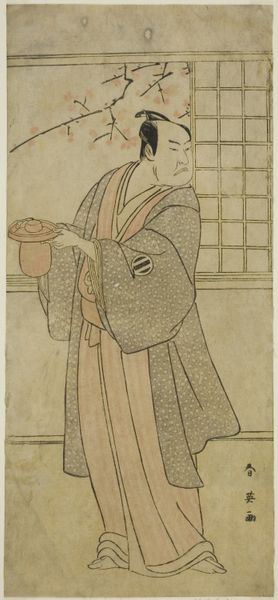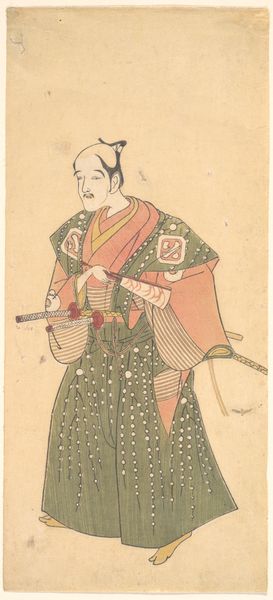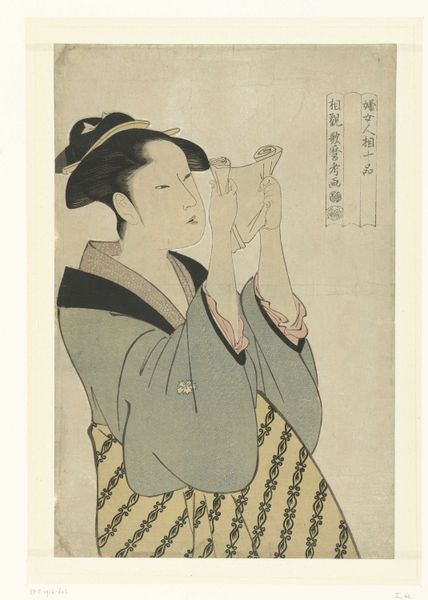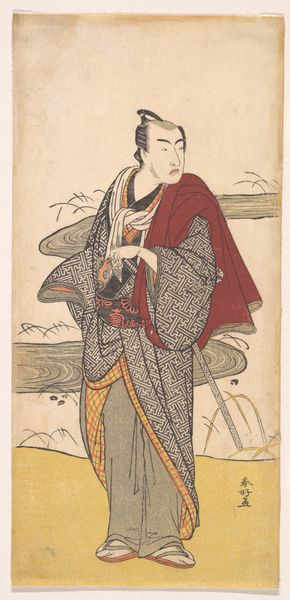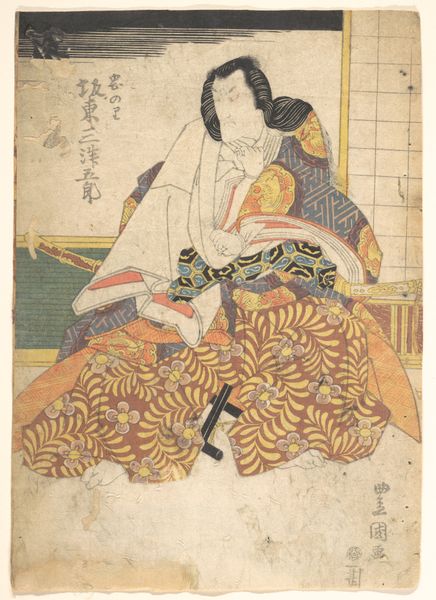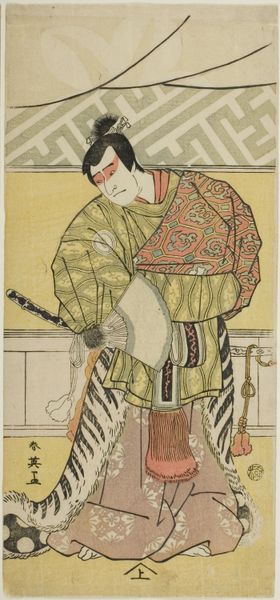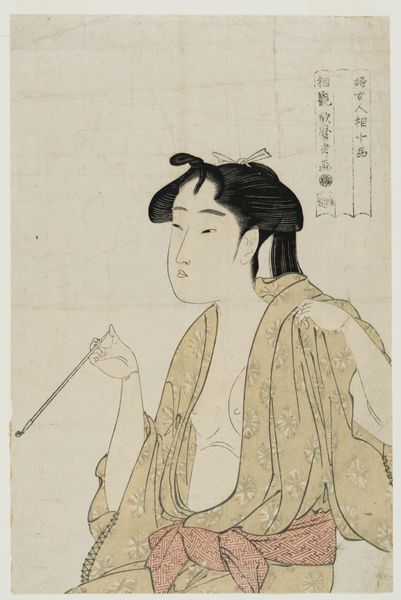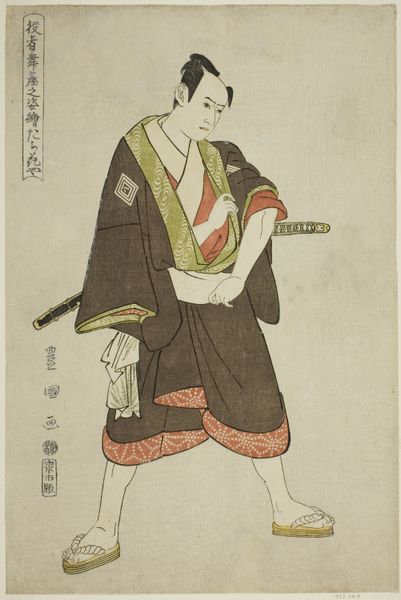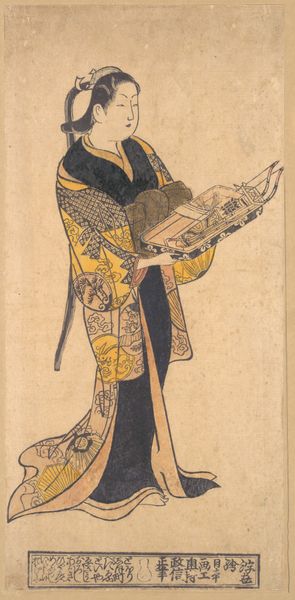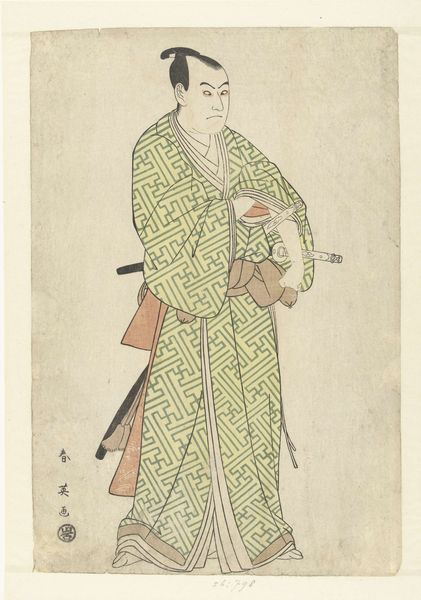
print, woodblock-print
#
portrait
# print
#
asian-art
#
caricature
#
ukiyo-e
#
figuration
#
woodblock-print
#
genre-painting
Dimensions: height 174 mm, width 135 mm
Copyright: Rijks Museum: Open Domain
Editor: This woodblock print is titled "Lezende acteur" – or "Reading Actor" - by Utagawa Toyokuni I, dating from around 1779 to 1825. I’m struck by how simply the artist portrays the actor absorbed in the text. It seems to isolate him and his craft. What elements of composition and style do you observe? Curator: The reductive nature of the portrait isolates its essence, does it not? Consider the flatness of the figure against the unmodulated ground. Depth is suppressed. There is no dynamic interplay between light and shadow. Look at the contours which are uniformly assertive in defining the figure’s volume. These stylistic choices create a deliberate sense of simplification. How does that affect your perception? Editor: It really emphasizes the two-dimensionality of the print medium itself. And the limited color palette feels very deliberate, focusing my attention. Curator: Precisely. Toyokuni strategically uses the limited colors, creating a striking interplay of tones that underscore the flatness of the picture plane. Consider the texture he creates through the linear pattern on the actor's robe. These formal aspects heighten the artifice of the artwork itself, a key attribute of the Ukiyo-e tradition. What feeling emanates from this visual compression? Editor: The compression amplifies the concentration – a deliberate, powerful representation. It highlights form rather than focusing on, say, narrative details. Curator: Exactly. We’re invited to consider its materiality, its very essence, removed from the details of its making and cultural origin. It reminds us that our reception of art lies largely in its visual expression, not in narrative. Editor: I hadn’t considered how that flattening reinforces the artifice. It provides a new awareness to bring to similar prints. Curator: A deeper understanding emerges by looking closely at composition, texture, color—beyond historical meaning. We gain insights applicable to numerous visual art forms.
Comments
No comments
Be the first to comment and join the conversation on the ultimate creative platform.
